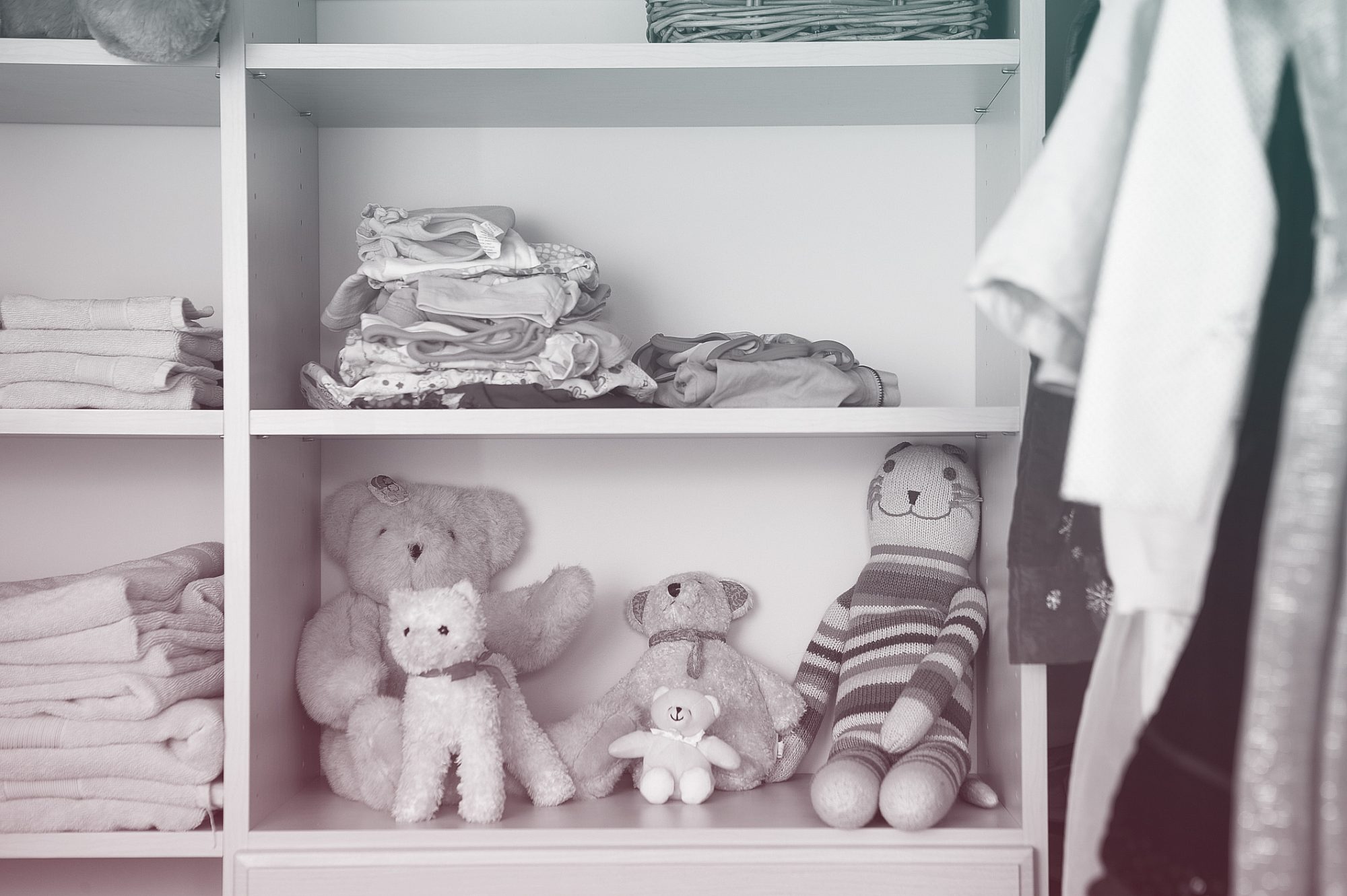
I was once hired to organize a 9-year-old's bedroom where I found glue sticks, tape, pom-poms, permanent marker pens, googly eyes, chalk, and half-baked crayons all clumped together in random bins. I quickly tackled the project by separating, sorting, color coordinating, and labeling all the art supplies into cute little containers and drawers. I felt accomplished and proud.
But when the 9-year-old came home for the big reveal, she burst into tears. In full tantrum mode, she picked up all the sorted containers and dumped them back into the bins, recreating her comfortable chaos.
That day, I learned an important lesson: Children want to own their rooms; it is not enough to organize for our little ones. They tend to view their room as one of the few places in the world that can be just theirs. Adults make a lot of decisions for children, but how their room is organized, is a decision that they can make on their own. It matters to them how they arrange it.
But as parents, we should still step in to empower our children to have good organizational skills. Here are three tips to get your kids to have a neat space and enhance their life skills at the same time.
Teach Them to Make Their Bed Like A Pro
When you walk into a child's room, the bed is usually the first thing you notice since it's often the biggest thing in there. So, when your kid straightens their bed, they straighten a big part of their room. That's one of the reasons I believe teaching kids to make their bed every morning is non-negotiable. Another reason? Charles Duhigg, author of The Power of Habit writes, "Making your bed every morning is correlated with better productivity, a greater sense of well-being, and stronger skills at sticking with a budget. It's not that a family meal or a tidy bed causes better grades or less frivolous spending. But somehow those initial shifts start chain reactions that help other good habits take hold."
Start with setting an alarm five minutes early and walking them through the steps for the first week until the habit catches on. And then focus on making it fun and manageable for your kids. Reduce the number of pillows and stuffed animals on the bed. Add a bin in the closet or under the bed for extras. Let your kids pick three favorites and put the rest in that bin. They can also decide each day if they want to switch over their favorites from their closet supply.
Teach them to remove their pillows first. My kids—13, 11, and 4 years old—love to dramatically throw all of their pillows off the bed. Then they can tighten their sheets, tuck their corners (make sure your kids are old enough to do that), and then replace their loveys with care. My kids enjoy putting them in different spots each day. We also like to add in a final touch: We spray the sheets with a lavender scent for fun. They enjoy the smell and spraying the bottle finishes the routine with a little extra love.
Play Some Laundry Games
Laundry does not have to be torture (at least for kids). When my kids were younger, I always let them feel the laundry right when it came out of the dryer. They loved the feeling of the warm clothing and towels. I would also let them have a snowball fight using clean socks. This kept them busy, created memories, and allowed them to see that laundry can be fun while being in the "room where it happens."
From a young age, my kids watched me fold instead of just having magically appearing clothes perfectly placed in their drawers. By the time they were 3, they could do simple tasks like matching up socks. And as they got older, they wanted to help more and then the training began with the goal of putting away their own clothes in their drawers. Not only does this help kids stay mindful of keeping their clothes tidy, they are also learning responsibility and self-reliance with these simple chores.
If you have teenagers, it's not too late. Laundry responsibility will help them get ready for college or independent living. It isn't unusual for a newbie to end up with an entire load of pink laundry when a red shirt bleeds on the whites. Or shrinking a favorite knit shirt or sweater. Teaching tips such as separating whites from colors, towels from clothes, and hang drying delicates will help avoid laundry disasters.
Get Creative With Their Treasures
Humans are collectors and gatherers by nature. Kids love to collect little things and that's OK! In fact, aside from collecting objects being fun, research shows it can even boost a child's intellectual confidence and uniqueness. And kids usually have a cute story that goes along with each rock.
But their desire to stock up on trinkets can also lead to mess and clutter. That's why finding thoughtful ways to display what reflects their current interests is important. This can be as simple as clear glass containers in the room that are filled with whatever interests your kids at the moment. Think rocks, small toy cars, or seashells.
Another option is a clear over-the-door shoe rack that can separate the different items into different sections. It's also helpful to give each child their own memorabilia box to keep in the closet or under the bed. They can continue to fill it with whatever they find special and reduce the clutter in the room. It's a win for everyone!
Katy Winter is a professional organizer and pantry stylist extraordinaire based in Chappaqua, New York, with a degree in fashion marketing from the University of Texas. Believing in a practical approach, she helps clients streamline their homes and simplify their lives through successful home editing and staging.













